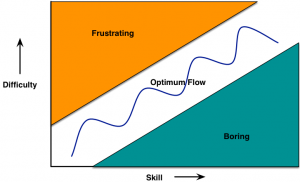I’m on record stating that I think learning experience design (LXD) is the elegant integration of learning science and engagement. In addition, I’ve looked at both. Amongst the things that stand out for me are that there are an increasing suite of resources for learning science. For one, I have my own book on the topic! There are other good ones too. However, on the flip side, for engagement, I didn’t find much. I had intended to write an LXD book, but then ATD asked for the learning science one. Once it was done, however, I quickly realized that I wanted to write the complement. Thus, Make It Meaningful was born. It’s available, but I’m also running a workshop on the topic, starting this coming week! Four weekly 2 hour meetings, at the convenient time of noon ET. It’s all about getting engagement right. So, what’s covered?
For the first week, there’s an overview of the importance of engagement, and how to set the ‘hook’. We’ll briefly review the reasons why to consider the engagement side (and trust me, this is something you want to do). Then we’ll talk about the first step, getting learners to the a motivated state to begin the learning. We’ll look at barriers to success as well, and what to do.
In the second week, we’ll talk about ‘landing’ the experience. Once the hook is set, it doesn’t mean you’ve got them through the experience. Instead, there’s much to do to maintain that motivation. In addition, you want to ensure that anxiety doesn’t overwhelm the learning, and you want to build confidence. We’ll talk about principles as well as heuristics.
In the third week, we dig into what this means in practical terms. What is an engaging introduction? What about the models and examples? The critical element is the practice that learners perform. We’ll talk about how aligning the practice with the desired objectives while making a compelling context is necessary, but doable.
In the last week, we’ll talk about making a design process that can reliably deliver on learning experience. We’ll take a generic design process and go through the changes that ensure both an effective learning design and an engaging experience. We’ll work from analysis, through specification, and on to evaluation (we won’t talk much about implementation, because of my quip that getting the design right leaves lots of ways to create the solution, and not doing so renders everything else extraneous.
Sure, you can just buy the book, and that’s ok. I’m all about getting the word out, and getting better learning happening for our learners. However, in the workshop, not only do you get the book, but we’ll work through the ideas systematically, put them into practice, and address the individual questions you may have. Look, getting engagement right is an advanced topic, but it’s increasingly what will differentiate our solutions from the knowledge ones that come from typical approaches, no matter how technologically augmented. This stuff matters! So, I hope to see you there.



 The point being, extending engagements with a few simple followups provides a much higher likelihood of improvement than just a one-off. It doesn’t take much, and the outcome is better. It is a spaced practice, really, and we know that works better. I reckon the marginal extra investment yields a much bigger benefit. Does that make sense to you?
The point being, extending engagements with a few simple followups provides a much higher likelihood of improvement than just a one-off. It doesn’t take much, and the outcome is better. It is a spaced practice, really, and we know that works better. I reckon the marginal extra investment yields a much bigger benefit. Does that make sense to you?